This is a continuation of a series of posts on the Fuji GFX 50S. You should be able to find all the posts about that camera in the Category List on the right sidebar, below the Articles widget. There’s a drop-down menu there that you can use to get to all the posts in this series; just look for “GFX 50S”.
I had a question about focus shift in the new Fuji 45 mm f/2.8 lens. Since I now have a precise toolset for looking at focus shift and autofocus accuracy, I applied it to that lens mounted on a GFX.
Here’s the focus shift with the lens manually focused wide open:
I’ve plotted the three Adobe RGB color channels. The graph presents displacement of the image projected on the sensor from the desired green-channel focal plane. Negative numbers indicate front-focusing. The image-plane shift is in micrometers (um). The separation of the focal distances of the three color planes is because of the longitudinal chromatic aberration (LoCA) of the lens. The dots indicate the results for each of the ten exposures at each f-stop. I’ve plotted lines indicating the average (aka mean or mu) of the sample set bolder and added thin lines above and below the means that are one standard deviation (sigma) away from them. We can see steady focus shift as you stop down.
Let’s look at the diameters of the circles of confusion (CoCs) implied by the above focus errors:
The Fuji pixel pitch is about 5.3 micrometers (um). If we look at the green channel, we can see that the worst-cast focus shift causes about 3-pixel-pitch-diameter misfocus blur. For critical work, that is unacceptable. You should manually focus this lens at taking aperture until at least f/4, and after that, you can focus it at f/4. there is a fair amount of longitudinal chromatic aberration (LoCA) at wide apertures, as seen by the separation of the location of the red focus plane from the other two channels.
Turning on autofocus, setting the mode to AF-S, the spot size to one smaller than the default, and release priority to “focus”.
The worst-case errors are smaller than when we looked at focus shift alone, meaning that the autofocus system is partially compensating for the focus shift.
The CoCs:
Now the worst-case green channel errors are held to a bit over one-pixel pitch. That is a good performance.
In AF-C mode:
The variability gets worse but is by no means bad.
The blur is again well controlled.
Color me impressed.
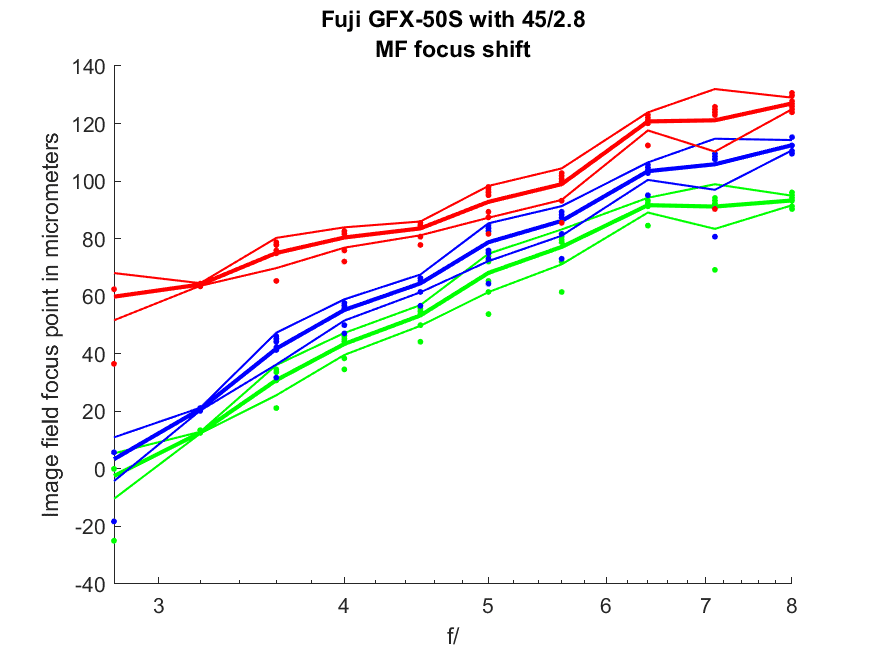
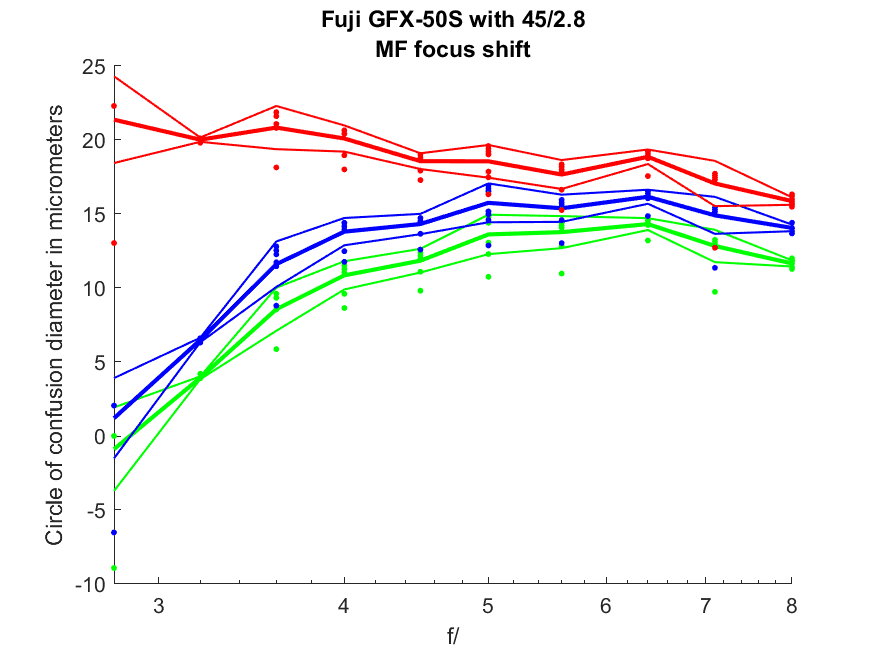
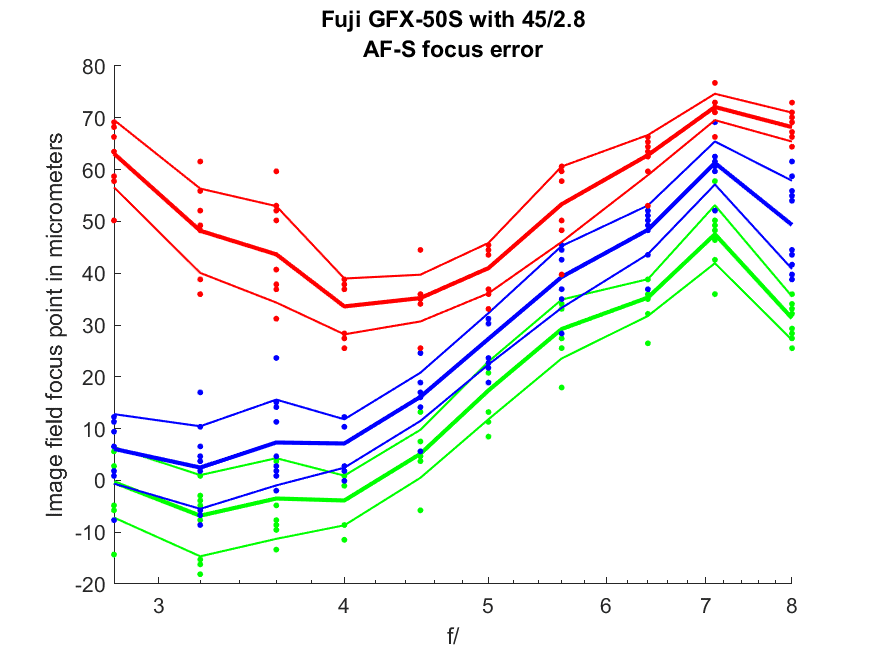
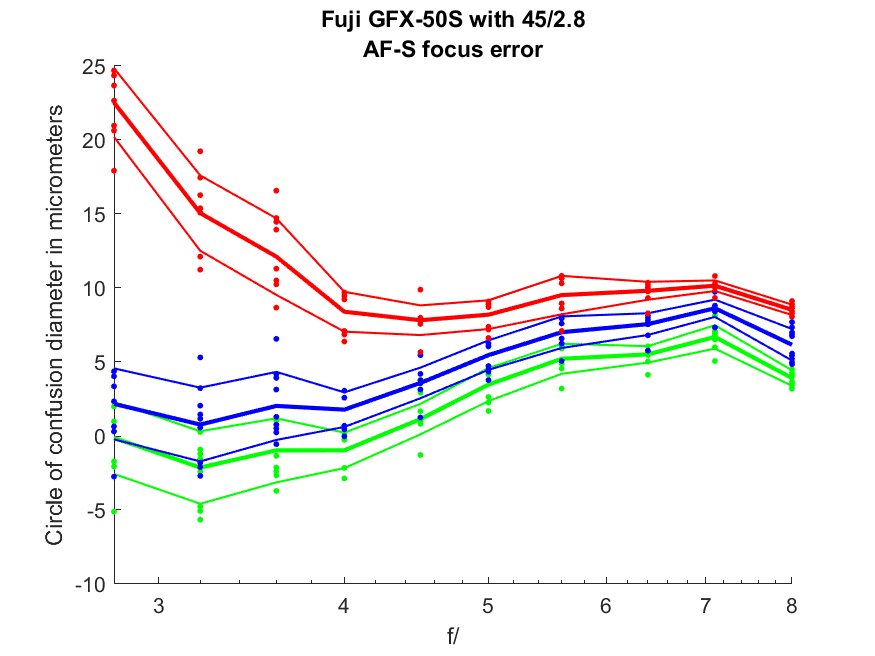
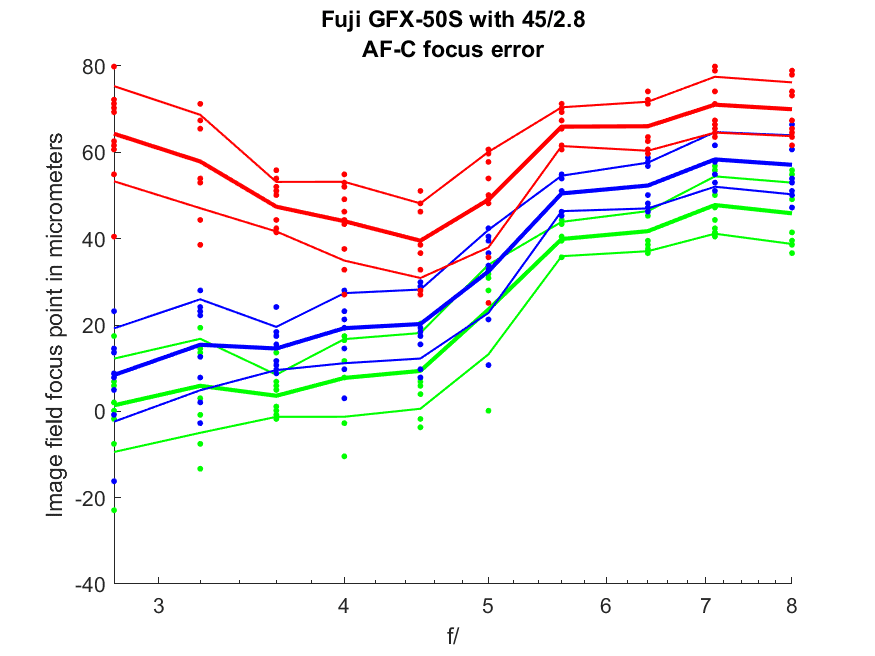
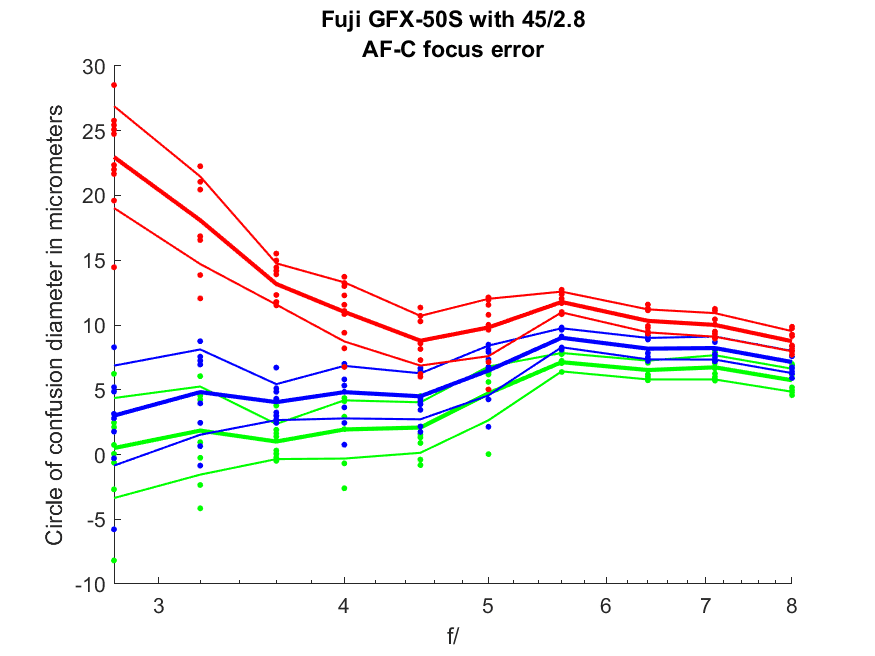
[…] Analysis The Last Word – Fuji 45/2.8 focus shift and autofocus accuracy The Last Word – Manual focusing […]